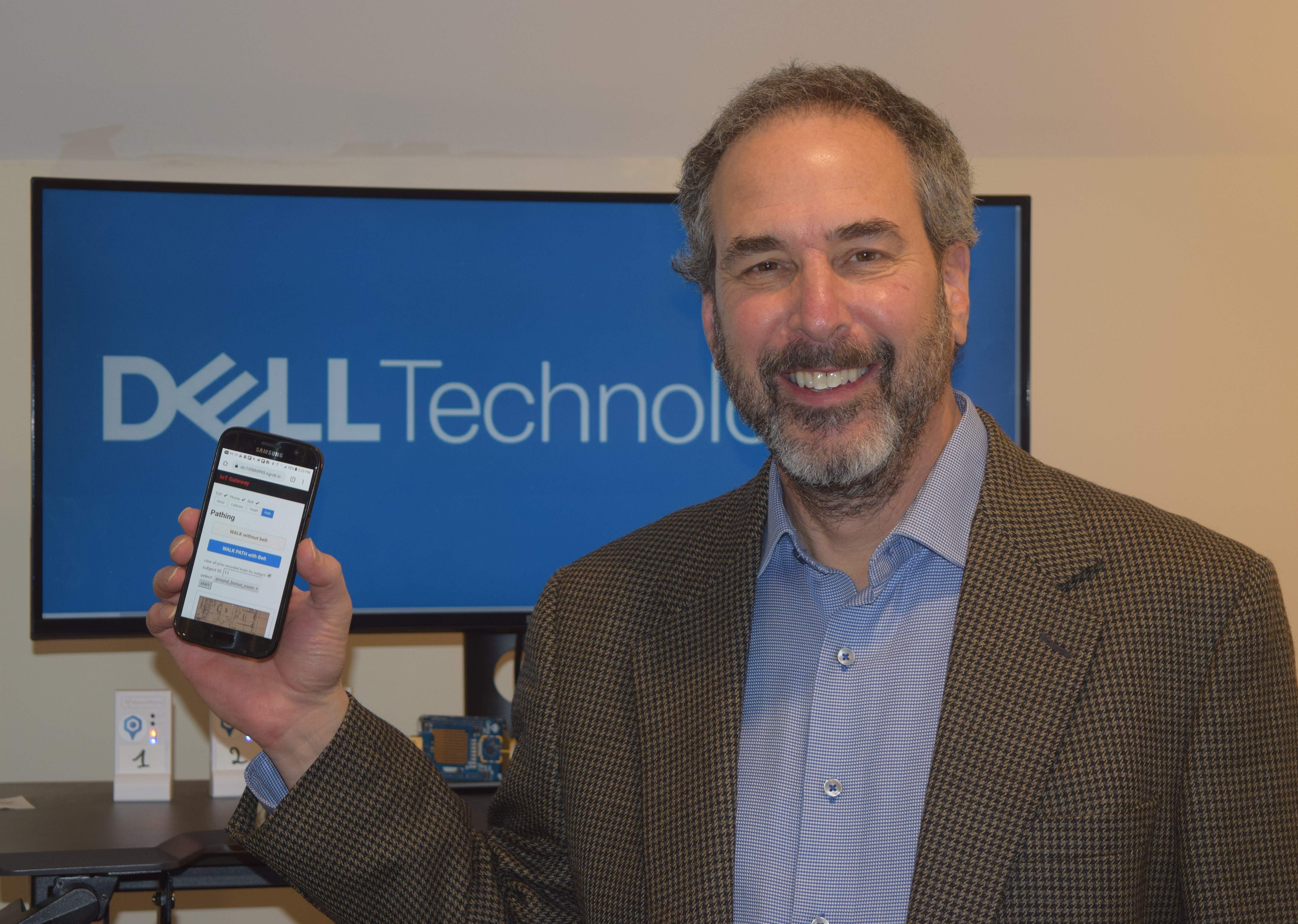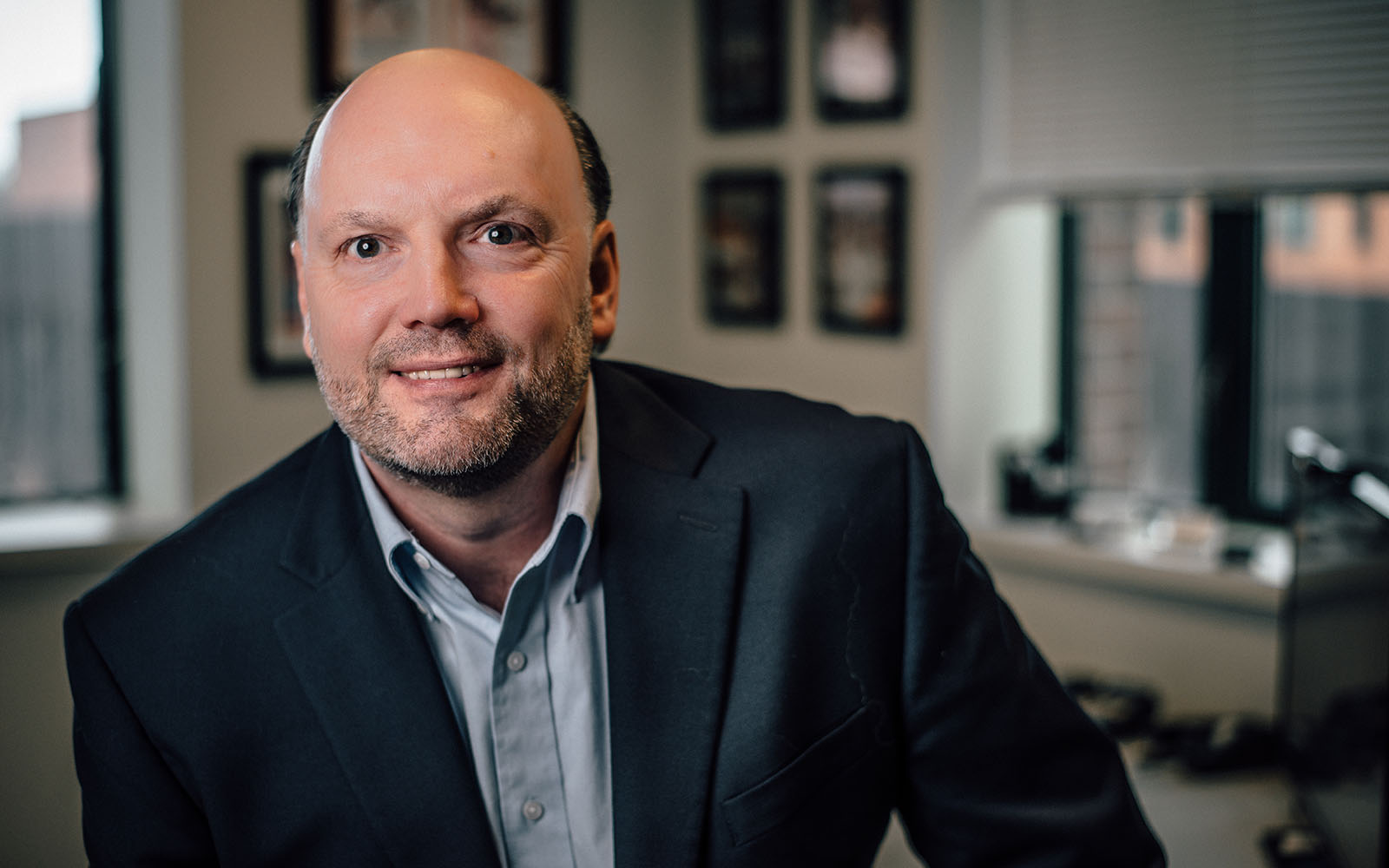Andy Slater remembers the first time he thought about the capabilities of haptic technology. He was on his motorcycle, wind streaming across his face, when he wondered about the feeling top professional racers must have.
“The original thought came six years ago when I was racing my motorcycle and realized I had hit a plateau. I thought that if I could feel the motorcycle and the track better, I would be a better rider. I wanted to take a guy who’s faster than me and feel what they feel. Why can’t we capture, modify, and replay our sense of feeling like we can with things we see and hear? And if we could use technology to enhance our feeling of the motorcycle, could we become a better racer? We see better because of glasses, telescopes, and microscopes, but why don’t we use technology to better feel the world around us?,” Slater said.
Slater, now a University of Connecticut Biomedical Engineering Ph.D. student at 58, and a 1985 UConn Engineering alumnus, has been working with The Center for the Ecological Study of Perception and Action Director James Dixon, Kinesiology Assistant Professor Steven Harrison, and UConn Deputy Fire Chief Chris Renshaw to translate haptic vibrations into a safety technology for firefighters.
So far, Slater has received funding and support from the UConn Fire Department, CTNext, the UConn/Connecticut Innovations Third Bridge grant, the UConn BME Department, and Dell Technologies, where he also works full-time.
Haptic technology, which is being used in devices like the Apple Watch and touchscreen phones, is a primitive form of vibrational feedback which provides users encoded information about the world around them. For example, on the Apple Watch, a particular vibration pattern on your wrist could be someone calling you or indicate you’ve received a text from someone special. In Slater’s device, he is hoping to take haptic communication to the next level. He has embedded 360-degree haptic feedback and indoor positioning to create a “GPS-like” experience that could save lives and structures.
As a firefighter, there are multiple techniques being used to safely navigate through a fire and out of the building. To stay paired together in limited visibility situations, a firefighter, crawling on the floor to limit exposure to the heat, will hold onto the pant leg of a partner, or when separated, their partner bangs an axe on the floor to provide an audible beacon back to safety. And once they are deep into a structure with only their oxygen and heat protective gear to keep them alive, they need to find their way out by remembering the sequence of lefts and rights on the way in, and play that backwards correctly.
The problem with that is a fire is loud and disorienting, and the inbound path can be complex and circuitous. Unfortunately, that, and the pressure of exiting before oxygen runs out, can make it impossible to find your way back, potentially leading to tragedy.
Using his technology, firefighters get haptic vibrations leading them into the fire and back to safety. From the command center, leaders can see firefighter movements in real-time and are able to instruct the system to route firefighters to targeted locations.
While Slater is a Ph.D. student at UConn, his full-time job is as an Advisory System Engineer at Dell Technologies. He has worked in the technology industry for over 30 years, and worked at IBM Research in 1996, when the internet was in its commercial infancy.
“At the time, the internet wasn’t taken that seriously, and people didn’t see the true capabilities of it yet.”
But today, Slater is using the internet and the cloud to power the signal that could be the future of firefighting technology. Better yet, high-ranking firefighters like UConn Fire Department Chief William Perez see his technology as a game-changer.
“We see this as potential technology to create the fourth wave of innovation in firefighting methods. The first was the transition from buckets to hoses, the second was the transition from horse-drawn pumper to pumper trucks, and the third was the transition to self-contained breathing apparatus (SCBA). Each of these innovations allowed firefighters to be more aggressive in attacking the fire, while improving safety. This haptic system has the promise to do the same.”
Slater will be testing the technology with the UConn Fire Department over the next several months, and if successful, hopes to have productive talks with firefighting equipment suppliers to license the technology into the gear already being purchased by departments. To fully bring the technology to fruition, Slater is working to raise additional funding and develop a close partnership with leaders already supplying the firefighting industry.
“Andy’s curiosity and dedication to bringing this high impact, socially significant, project to life is a prime example of the spark that drives everyone at Dell Technologies to advance human progress in all that we do,” says John Roese, Global Chief Technology Officer at Dell Technologies. “We can’t wait to see where Andy’s project leads him and the positive human impact it will deliver at scale.”
In the end, Slater believes that firefighting applications are just the beginning for haptic technology.
“When you really open your thinking on this, it can be used for just about anything. My interests are in expanding the limits of our awareness to achieve new levels of performance—the possibilities to advance human progress are endless.”



